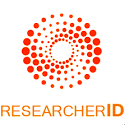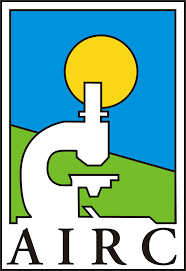






__________________________________________________________________________________________________________________
Projects
AIRC MFAG: 'Gliomath'(PI: 2015-2018)
Recruited Staff
Abramo Agosti (post-doc),
Stefano Marchesi (post-doc),
External Collaborators
Francesco Acerbi (Neurosurgeon in staff, IRCCS Carlo Besta),
Giorgio Scita (Group leader, IFOM),
ABSTRACT
Background
Glioblastoma Multiforme (GBM) is a multifactorial disease, representing the most common type of primary malignant brain tumors. Its high invasiveness, aggressiveness and the complex clinical phenotype make it particularly difficult to treat, despite new technologies. In addition, GBM cells are highly infiltrative, and GBM invariably recurs over time despite maximal postoperative therapy: patients have an extremely poor prognosis with a median survival of 15 months.
Hypothesis
The integration of clinical, ex-vivo and in-vitro observations about the GBM mechano-biology characteristics at different scales with mathematical models and methods, represents an original systems medicine approach having the potential to provide novel insights on the progression of the disease and to support medical doctors to optimize the diagnosis and the therapeutic strategies for GBM.
Aims
GLIOMATH proposes an original trans-disciplinary approach in systems medicine aiming at: -building and simulating new mechanistic mathematical models that account for the complex mechano-biological processes driving GBM invasion; -integrating the most powerful recent imaging techniques and clinical data; -supported by in-vitro and ex-vivo experiments studying GBM cells migration, motility, and invasion as well as their interaction with the microenvironment; -translated into easy-to-use, patient-specific clinical tools to support medical doctors in their clinical treatment of GBM.
Experimental Design
GLIOMATH will use clinical data from the most advanced imaging techniques, such as diffusion tensor imaging, to feed into and validate innovative mathematical and numerical methods. In-vitro and ex-vivo experiments will be performed to investigate the effect of mechanical forces on GBM cell proliferation, apoptotic rate and invasive potential. The GBM interaction with the microenvironment will also be investigated for studying how the stress can be modulated to improve therapeutic outcome. The information derived from the experiments will be employed by the multi-scale model to determine in silico the tumor growth characteristics.
Expected Results
GLIOMATH has the potential to create a breakthrough in personalized clinical oncology for GBM. This will be the first attempt to integrate neuro-radiological images with the in-vitro and ex-vivo microscopic GBM properties. The parameters obtained by integrating such different data will be the input of the multi-scale mathematical models and simulations, whereas the investigation of the mechano-biological processes driving GBM invasion and the proposal of predictive systems medicine software tools will be the primary outputs of the project.
Impact On Cancer
GLIOMATH is expected to translate from academia to clinics the tremendous advances of the recent decades in the development of mathematical models of cancer growth and therapy. It is believed that transfer from the traditional mathematical methods to a predictive patient-specific approach may lead to a new direction for a deeper understanding, a more effective diagnosis and therapy in clinical oncology and, ultimately, to improve prognosis for GBM in terms of lowering mortality and increasing the patient quality of life.___________________________________________________________________________________________________________________________________________________________________________
Pasquale Ciarletta - Dipartimento di Matematica - Politecnico di Milano - Tel: (+39) 02 23994565 Cookie policy Privacy policy
Abramo Agosti (post-doc),
Stefano Marchesi (post-doc),
External Collaborators
Francesco Acerbi (Neurosurgeon in staff, IRCCS Carlo Besta),
Giorgio Scita (Group leader, IFOM),
ABSTRACT
Background
Glioblastoma Multiforme (GBM) is a multifactorial disease, representing the most common type of primary malignant brain tumors. Its high invasiveness, aggressiveness and the complex clinical phenotype make it particularly difficult to treat, despite new technologies. In addition, GBM cells are highly infiltrative, and GBM invariably recurs over time despite maximal postoperative therapy: patients have an extremely poor prognosis with a median survival of 15 months.
Hypothesis
The integration of clinical, ex-vivo and in-vitro observations about the GBM mechano-biology characteristics at different scales with mathematical models and methods, represents an original systems medicine approach having the potential to provide novel insights on the progression of the disease and to support medical doctors to optimize the diagnosis and the therapeutic strategies for GBM.
Aims
GLIOMATH proposes an original trans-disciplinary approach in systems medicine aiming at: -building and simulating new mechanistic mathematical models that account for the complex mechano-biological processes driving GBM invasion; -integrating the most powerful recent imaging techniques and clinical data; -supported by in-vitro and ex-vivo experiments studying GBM cells migration, motility, and invasion as well as their interaction with the microenvironment; -translated into easy-to-use, patient-specific clinical tools to support medical doctors in their clinical treatment of GBM.
Experimental Design
GLIOMATH will use clinical data from the most advanced imaging techniques, such as diffusion tensor imaging, to feed into and validate innovative mathematical and numerical methods. In-vitro and ex-vivo experiments will be performed to investigate the effect of mechanical forces on GBM cell proliferation, apoptotic rate and invasive potential. The GBM interaction with the microenvironment will also be investigated for studying how the stress can be modulated to improve therapeutic outcome. The information derived from the experiments will be employed by the multi-scale model to determine in silico the tumor growth characteristics.
Expected Results
GLIOMATH has the potential to create a breakthrough in personalized clinical oncology for GBM. This will be the first attempt to integrate neuro-radiological images with the in-vitro and ex-vivo microscopic GBM properties. The parameters obtained by integrating such different data will be the input of the multi-scale mathematical models and simulations, whereas the investigation of the mechano-biological processes driving GBM invasion and the proposal of predictive systems medicine software tools will be the primary outputs of the project.
Impact On Cancer
GLIOMATH is expected to translate from academia to clinics the tremendous advances of the recent decades in the development of mathematical models of cancer growth and therapy. It is believed that transfer from the traditional mathematical methods to a predictive patient-specific approach may lead to a new direction for a deeper understanding, a more effective diagnosis and therapy in clinical oncology and, ultimately, to improve prognosis for GBM in terms of lowering mortality and increasing the patient quality of life.
Pasquale Ciarletta - Dipartimento di Matematica - Politecnico di Milano - Tel: (+39) 02 23994565 Cookie policy Privacy policy
